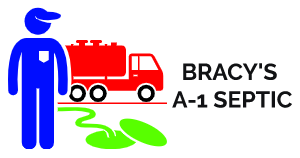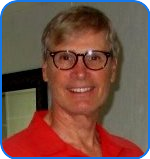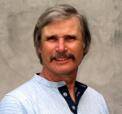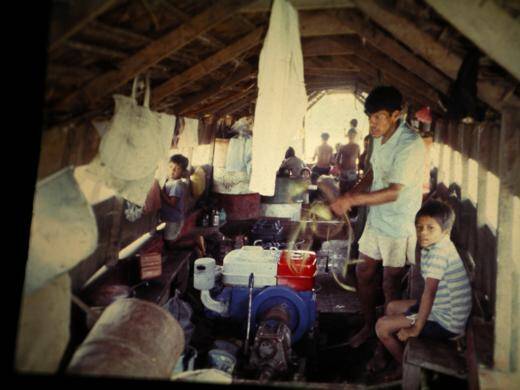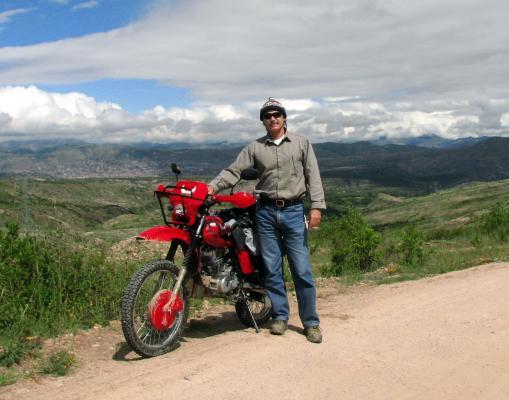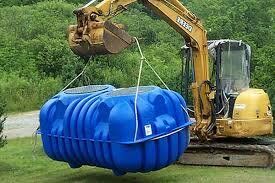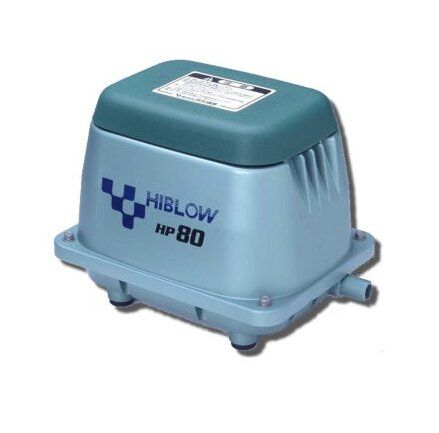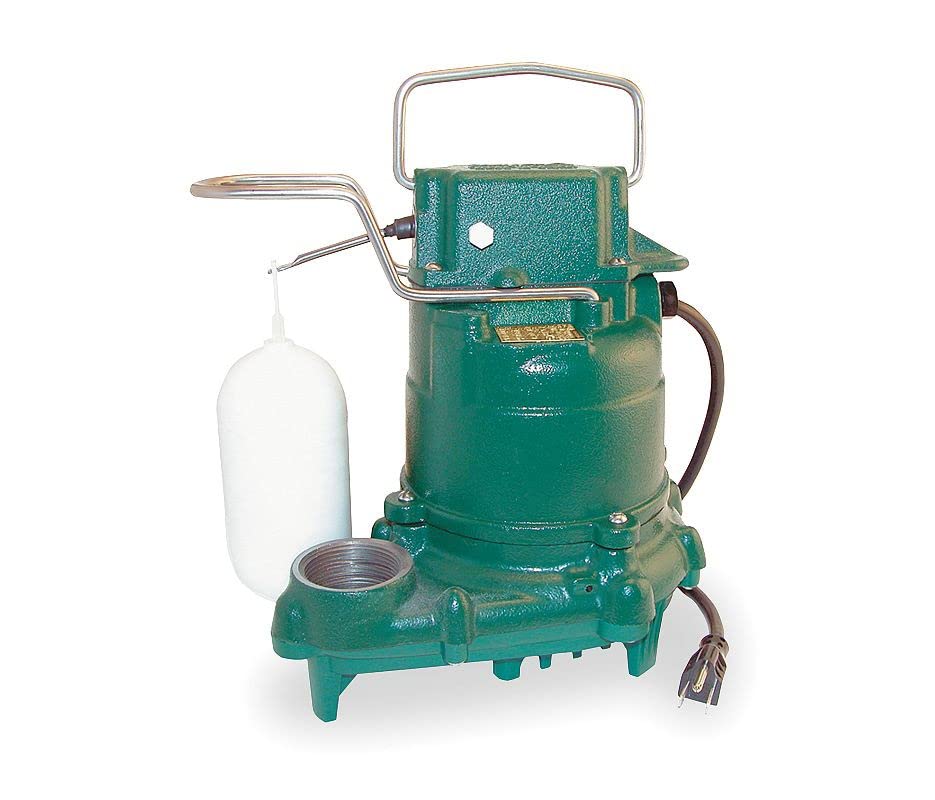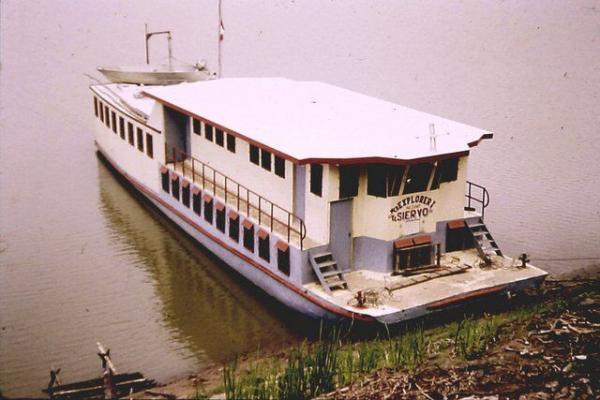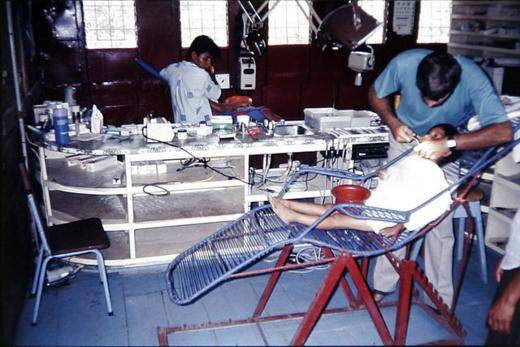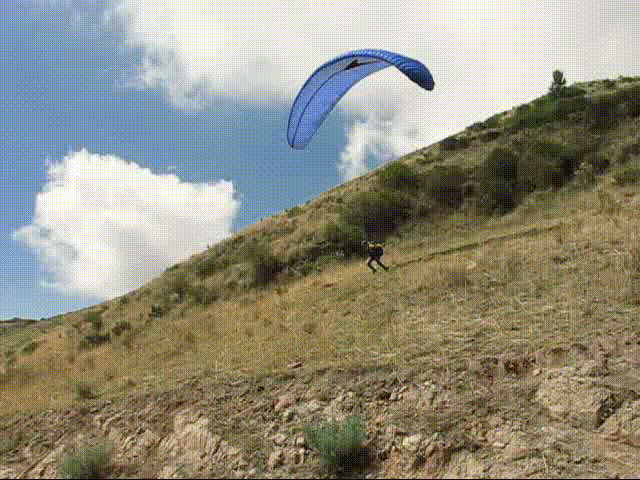Questions? Call (225) 715-5784
“Here to Serve You!”:
Bracy’s A-1 Septic is owned and operated by Rich Bracy. I am here to serve you in the name of Jesus Christ my Lord!
Since I am the owner and operator, I am able to take the time to know your needs and find solutions to your septic system problems. I am excited to get to know you and in some small way touch your lives for the better!
IF YOU HAVE THE TIME KEEP READING!
“My Life’s Journey as a Biologist and Evangelical Missionary in the Amazon Jungle; My Work in Dentistry, Optometry and Eye Surgery; My Travels along the Amazon as a Riverboat Captain and Floatplane Bush Pilot.”
 Early years
Early years
I was born in Alhambra, California in 1953 to a family of outdoors-men and fun seekers in general. I grew up fishing, swimming, skiing, surfing, scuba diving, and sailing the blue waters off the southern California coast in our 33 foot sloop.
Every weekend it seemed, I was off to an island called “Catalina” or snow skiing and riding motorcycles near our family’s cabin near Mount Baldy, in San Bernadino. As I grew older, I loved the sport of hang gliding and enjoyed many happy soaring adventures during my college years. Whatever the sport, it was the outdoor life and beauty that I just couldn’t seem to get enough of. When it came time to decide on a chosen profession, I decided to become a fish biologist and headed to Humboldt State University and to the magnificent redwood forest!
The Student?
In college, I wasn’t much of a student, but I sure knew how to have a good time with my hang gliding and new found love of fly-fishing for Steelhead on the Klamath River! I was also on the track team and became an “All American” in the Javelin Throw.
As I barely graduated from Humboldt State with a BS in Fish Biology, I had to face the fact that a C student is not a particularly attractive job applicant. I wasn’t really ready to work anyway, so I decided to enlist in the US Peace Corps as fish biologist to the Philippines.
Peace Corps
I lived on a small island called “Catanduanes” for the first year and managed a fish-culture facility there. It was nice being the only American on the island and I explored every inch of the island’s tropical rainforest…It was a great home away from home.
The next year, I left Catanduanes to live with a mountain tribe called the “Ifugaos” (Ee-fu-gows) in the northern island of Luzon. I lived up in the majestic stair-stepped rice terraces. I was sent to promote fish culture in the rice terraces themselves. That’s right! For most of the rice growing season the terraces maintained a water depth of 6 inches, just enough to raise fish called “carp”.
Wandering
After my time in the Philippines, I found work in Hong Kong, crewing on a racing yacht for the “Royal Hong Kong Yacht Club”. It was great work and I loved living and working at the ocean once again.
Eventually though, I knew I had to quit all this fun and begin a “real” profession of some kind. So regrettably I hopped a jet and returned to the US.
A Real Live Fish Biologist
When I returned to the US, the job market for fish biologist hadn’t improved much, but at least I had the work in the Philippines to recommend me. I headed towards Seattle, Washington to visit my mother and father and on the way I stopped in Portland, Oregon to look for a position with the US Fish and Wildlife Service.
It was a fortuitous moment for me as I was given an immediate interview for a career position that had just opened up that day! My Philippines work on my resume did leave a favorable impression and I was hired on the spot!
So, here I was with a career position as a real live Fish Biologist, in the beautiful city of Portland, Oregon. And it got better! I was to live halftime out in the wilderness areas gathering data and halftime in my office. I was my own boss and was provided with a brand new Dodge Power Wagon and a large tandem-wheeled travel trailer to employ during my studies.
What a life! I fished during the early mornings and evenings and serenaded myself to sleep every night with my guitar!
After a year and a half, my first project was finished successfully and I was on to another. How could I not be happy…but I wasn’t. I was searching and trying to find more meaning to life. I found it when I became a Christian.
This of course, caused all sorts of havoc, as I was a biologist and biologists aren’t suppose to be Christians. Even so, my co-workers took it well and seem to have a certain respect for my new found beliefs. The problem was me; I just couldn’t keep my mind on my work and so I decided to leave and become an evangelical missionary, of all things! I joined a church and went to Bible School for a year and was off to who knows where?
Refugee Camps of Somalia
I found myself in the unbearable hot desert of Somalia living in one of the refugee camps. This was in 1981, or there abouts. I volunteered for a year to drive supplies to the camps, assist doctors with their patients and incredibly, to teach the people to fish!
Yes, there was a river of sorts near the camps. I was to inventory the fish species and teach the people how to catch and prepare fish as food. I know this might sound silly, but the Muslim people there did not eat fish, even though they were starving!
The “Juba” River, as it was called, was indeed teaming with fish; all sorts of really strange ones too. My favorite was the electric catfish. I’m not kidding! I was getting shocked all over the place until I taught others to get shocked for themselves!
As the year ended and I was really not wanting to continue on in this environment so I was off again…
The Peruvian Amazon
While I was in Somalia, I had been corresponding with a missionary in Peru, who eventually invited me to work with him. Since there was no turning back now, I said “fine”, and hopped a plane to Lima and then was off to an Amazon jungle town called “Yurimaguas!
“Wow, folks, this was my kind of country!” There was a seemingly endless river to explore called the “Huallaga”. Then there was the tropical rainforest of my dreams, waiting for every adventure. I quickly signed up and was ready for work! And work I did. My missionary friend and I took off in his old steel hulled “tub-shaped” river boat and began my ministry to the villages. My preoccupation for the first months was learning Spanish and just how exactly to “pull” teeth. Of course that’s a layman’s term for what “real” dentists, call an “extraction”. Yeah, believe it or not, before you know it, I had learned to pull teeth…hundreds and hundreds of them. The Amazon was full of people suffering from rotting teeth with no one to help them. With no dentists to perform fillings, the next best solution was just to get the teeth out. And, so I did!
After a year with my friend, I decided to strike out on my own, build a river boat and go head on into the study of Medicine. I traveled about 200 miles down river, on the main Amazon River and settled in the river city of Iquitos.
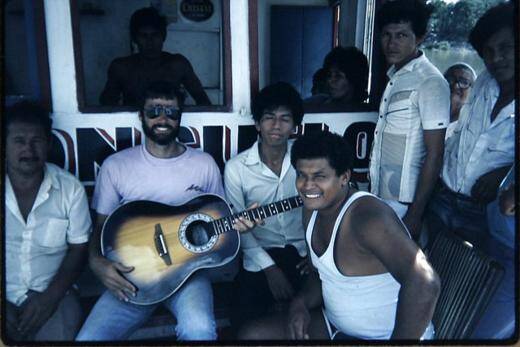
My Own River Boat!
I was receiving about $300 or $400 per month in those days from friends back home, so money was a little tight. Fortunately, I had my own savings and began building my river boat.
I found a half sunken, rusted-out, steel hulled, flat-bottomed motor barge called a “motochata”. It was a monster, at 73 ft long by 20 feet wide, weighing in at some 35 tons, and it took two weeks to haul it up on the bank to begin a radical reconstruction. It took a year and a half to complete at a cost of about $20,000.
Now let’s stop imagining and take a look at some photos I have of the building process.
Mobile Medical Clinic
At the same time I was building my river boat, now called “El Siervo” (The Servant), I was madly studying general medicine, optometry and ophthalmic surgery in the naval hospital in Iquitos. At the time, my biologist background was enough for the Peruvian Medical Association to let me train.
“El Siervo” was finally finished! It became my home, transportation and medical clinic as I traveled the Amazon River. In the next photos, you will see me in action, doing the medical work. The medical clinic was downstairs in the hull and was equipped with two complete dental stations…air-drills and the works. I also did eye exams for glasses and made the prescriptions up on board.
The most rewarding part of the medical work for me was performing eye surgery to remove “pterygiums”. In one of the following photos you will see a Pterygium affected eye. The Pterygium is a fibrous scar tissue that grows over the cornea of the eye as a result of chronic conjunctivitis. And this is due to reflections of the tropical suns rays, as well as irritation from dust and insects. It eventually causes complete blindness.
Finally up and running, I was living a dream for many years, navigating the Amazon River with a great crew! I loved the medical work and seeing needy people really being helped where they needed it. Along the way I had to deal with Cholera epidemics, piranha bites, stingray puncture wounds, snake bites, axe and machete wounds and the like. Combine this with occasional encounters with the terrorist organization known as “The Shining Path” and you know that all this was great adventure!
I made many friends and believe me, it was definitely not all work and no play! In fact there was always time for fishing and exploring. Let me give you just one account…
Living As The Natives Do
As I made friends with the indigenous people, I was always being invited to explore, hunt, fish and gather with them. On one occasion, I had just purchased a small (36 foot) wooden boat and installed a little 12 hp diesel for one of the communities. Their plan was to take off up the Napo River and then to the extremely isolated Curaray River on a fishing trip. I was invited to spend a few weeks with them and I took on the challenge.
Now let me say that Amazon natives do not prepare a whole lot in their life. They live off the land as only they know how to. So, I am off! That is two families, or 21 individuals and me in that little boat! As the first day progressed, I was getting a little hungry and come to find out that no one had bothered to bring any food!
Long about 2:00 pm, we ran the boat aground on the river bank and my friends began to forage for food. I got out to help, but only managed to catch a number of chiggers that began to make the more sensitive parts of my body very itchy and uncomfortable. No problem, I was given a diesel fuel bath and all was well.
From that day forward, we lived mostly on one smoked alligator per day and an orangish fermented concoction called “masato” (mah-sah-toe). It was made from 100% pure Amazon River water and the oily pulp of a palm nut called “pifayu” (pee-fay-ew). The alligator was great tasting, a little like smoked sturgeon. The masato, however, was not at all pleasant. I might say though, starvation makes even masato go down well!
Five days later we reach the inky black lake waters of our fishing grounds. What a sight, my friends! The colors and pungent smells of the rainforest were all around me…I was in paradise. We made camp and prepared to go fishing. What do you mean fishing at 10:30 pm?!! It didn’t seem quite right to me for many reasons, not the least of which was the fact that it was too dark to see!
No problem, my friends assured me, the eyes would adapt. We paddled off into the blackness. The dugout canoes were cutting the water, the paddles were slapping and I was beginning to feel easy and warm inside again. That lasted until they informed me that it was time to set the nets and so, “was I ready to get out and swim?” Sure, of course, “No problem.” I was in the water, to my chest padding bare-foot along the bottom, hoping and praying that no unseen creature would be attacking me.
We spread out the net, like a purse-seine, with a man stationed every 40 feet or so around the circumference. The idea was to draw the net in, ever reducing the circle, while each of us held the top of the net over our heads to keep the crafty fish from jumping out of the net.
Things were going smoothly when I could just barely make out a line of bubbles breaking the surface of the water about 20 feet from my position. I had already been informed that these bubbles are often the sign of approaching alligators. You might imagine my concern as that line of bubbles appeared to be veering straight towards me.
I let it be known to all that I saw the approaching bubbles and was just wondering, what I should do. With casual reassuring voices my friends convinced me that it was surely no reason for any great alarm. Well, I was alarmed and the bubbles were now 10 feet away and there was nothing between me and it but a thin nylon threaded net!
Five feet away now, and I am insisting that I need some urgent decision making on my situation. just as calmly as ever, they commented something about getting out of there quick. I did, and it was an alligator!
I had had enough for the moment and pulled myself into the safety of a canoe and watched with amazement as real men, chest deep in murky water, in the middle of the night, brought in their dangerous catch just as nonchalantly as shopping at the market. They grabbed my alligator with bare hands and dispatched it quickly with a machete. They also gathered in the usual umpteen varieties of fish with poisonous spines and piranha sharp teeth. It was all just a night’s work.
The next few days, I found myself getting into the rhythm of things and actually being of some use to my the rest of the men. One morning I paddle softly out into the low mist as the sun is on the rise. What peace, I am thinking. This is the real life!
Just then a pink dolphin breaks the still black water, lunging, jumping, chasing a primitive big-eyed, bright yellow fish called an “Arahuana” (air-ah-wah-nah). What a sight; the black water, the pink dolphin and the yellow arahuana dancing across the lake!
It’s all over too soon as the leaping masters reach the far water’s edge. The dolphin has played enough and grabs his prey right out of the air. The lake is silent and now it’s my turn to fish.
I jump into the water and help set the net. It begins to rain, nice at first. Then, I am feeling cold and begin to shiver. The storm is a long one, so I hunker down and burrow into the soft mud. I feel warm and congratulate myself on finding just the right solution. A half an hour later, the rain lets up and I extricate myself from the warm gooey mess.
Something’s wrong, something is biting me…all over! What a surprise to find fat, blood-filled leeches all over my lower torso. No time and no match to burn them off. I can’t stand it; I just start ripping them off me. No time to worry about their heads still underneath my skin. No problem. My brothers are laughing…no big deal!
Later that day I managed to scrape the top of my foot on a razor sharp snag in the water. I’m bleeding; I’m itchy from the leaches…it’s time to call it a day. Back at camp, I am envious of the leather thick skin that protects my brother’s bodies. I am hurting and know that it’s just a matter of time until my wounds begin to infect.
My friends try to encourage me and treat my wounds with their jungle medicines. Oh well, nothing to do but keep on keeping on, so the next day I am up and out fishing again. Two days later and I can no longer walk. My foot and lower leg are swollen to perfection. I limped out to go to the bathroom and got into another nest of chiggers.
It was a rough night and the next morning the men convince me that it’s time to make a beeline for the safety of home. I considered it a wise suggestion and bid them farewell; I hopped the next banana boat headed down river.
Actually, I was extremely fortunate to find a boat that far up the Curaray River. Even though there was no real room available, I jumped on and spent the next three days and nights on the boat’s roof, in the sun and the rain, with the ever biting insects, not to mention the throbbing pain of my resentful leg.
It was, to say the least, a welcome sight to see my boat on the horizon. Sun-shiny and clean, waiting to sooth the pain. I hobbled aboard and finally allowed myself to go limp in the arms of my sympathetic crew.
A week or so later and I was almost as good as new. I wish I could say I was the wiser for my experience. No, this is the Amazon Jungle. Suffering is a part of the adventure. If the Amazon was tame, it would no longer be…
Why Not Be A Pilot?
Eight years later, I began to have funding problems due to certain policies within my mission. To be more precise, I was found to have certain beliefs that no longer coincided with the mission’s norm. I was told to look elsewhere for funding.
Now I should have looked for another mission to support the work, but at the time, I was pretty hurt over my sudden dismissal and just felt like I didn’t want to go back to the US and start all over again. It was a mistake, but I looked up and said, “Why not be a Pilot?”
It was more difficult than I could express but, sadly, I sold my beloved boat to raise enough money to buy a small plane. Even that was not enough, so I went far into debt for the extra money for pilot training.
Earlier, I had married a Peruvian gal from my church in Iquitos named Pilar and she was now three months pregnant. All of this created quite a complicated predicament, but I had made the decision so I just felt I had to tough it out.
I was able to make a flight contract with a tour operator in Iquitos before Pilar and I traveled to the US. It gave me some up front money, but stipulated that I had to be back and operating in five month’s time. No problem!
Imagine, that here I wasn’t even a pilot; I had no plane and I was out there making flight contracts! It was all pretty crazy, but then, I was definitely out of my mind at this stage and really broken up about losing my mission and way of life.
I arrived in the US and settled into the city of North Augusta, Georgia. Then the push was on. I put my whole being into flight training and flew three or four hours a day. Thankfully, I received help from some kind Christian friends and was able to meet the financial obligations.
When I had finished my first 50 flight hours in a small Cessna 152, I decided it was time to buy my floatplane to fly off the remaining 200 hours I needed for my commercial license. I had done a lot of study on the perfect plane for my needs. It would have to be old, (which means relatively cheap to buy), run on car gas and be able to carry a pilot and at least three passengers.
The final candidate turned out to be a Cessna 180 (C-180). However, C-180 floatplanes are practically non- existent in the States, so I scanned every ad I could find on Canadian aircraft until I found just the right one. It was located in Ottawa, Canada and was a vintage 1955 model.
I called the owner and asked him if he thought his aircraft was in good enough condition to fly over the ocean to Peru. He said, “No problem”. So, I was off to Ottawa, bought the plane, hired an instructor to fly with me to North Augusta and arrived there two flight days later.
I had previously scouted out places that I could employ as a landing strip in North Augusta. You know, water landing areas are not easy to come by. Fortunately, the Lord was with me (as you might have gathered by now) and I found a place on the Savannah River just five miles from where I was living!
Four months and 200 flight hours later I was certified as a genuine Commercial Floatplane Pilot! I couldn’t believe that I had gotten this far, but the real challenge was still to come. I had the small matter of flying over the Caribbean ocean to Peru!
The Risk Of A Lifetime
Pilar had just given birth to my little boy, Jordan Boomer, so we were ready for the trip back to Peru. Pilar would be going by commercial airlines and I would fly my floatplane down…somehow.
It was the moment for the risk of a lifetime. I was now some $30,000 in debt, without life insurance nor even insurance on my plane. Worse yet, I was scared out of my wits! I felt it about a 50/50 chance of coming out of this alive and I was all too impressed with the real possibility of never seeing my wife and child again.
A couple of days before I left from North Augusta, Georgia, a Baptist missionary floatplane pilot friend of mine from Iquitos named Kevin, flew up from Peru by commercial airlines to accompany me on my trip.
Our first obstacle to overcome was to somehow carry enough fuel to give us eight to nine hours of continuous operation. I had 50 gallons of useable fuel capacity in the wing tanks. I figured I’d need an extra 60 gallons that I could store in the pontoons; 30 gallons on each side. But, How? I finally lined the respective pontoon compartments with blue polypropylene tarps and then for the actual gas bladders I employed five; 48 gallon plastic trash bags one inside the other per pontoon. Then I rigged up two electric fuel pumps, one for each pontoon and their respective fuel hoses to reach the fuselage where they would tee into another auxiliary pump. This last pump would pump the pontoon fuel into one of the wing tanks during flight…at least that was the idea!
I filled up my new pontoon tanks and closed the inner most trash bag of each around the pick-up fuel hose with a plastic tie-wrap. Then I filled up the plane with the estimated weight I would bring along on the trip. The weight that my plane was rated to lift was 1,000 lbs. When all was estimated, I figured my actual weight to be carried would be 1,350 lbs.
I buckled up and gave it a try and to my amazement I did get off the water and into the air! The next day we were off for our first leg of the journey, from Augusta, Georgia to Miami, Florida. This proved to be a good test of my inflight refueling system. It did actually work, although we had a few unaccountable sputters from the engine.
We landed in a Miami harbor where we were told beforehand that we could stay for the night. However, once actually there, we were told to leave and so flew to another harbor where we were again asked to leave. Now, just at night fall, we flew into still another harbor where it seemed safe to dock. We found that where we finally tied up was at the edge of a police/fire station. The firemen seemed pleased to see us and invited us to stay with them at the station for the night. we were even treated to pizza!
I talked with one fireman, who was a boating enthusiast, acquainted with the area we were to fly over. I learned that our first leg out over the ocean through the Bahamas to a small island called Great Inagua was going to be a little difficult. He talked about only two possible landing sights.
When the dawn came I was feeling just a little nervous as we headed out over the first hundred miles of nothing but stormy ocean below. I was bothered mostly because I still couldn’t explain the sudden coughing of my motor on our first leg to Miami. Well, with a 20 knot tail wind flying at 7,500 ft we were making great time. Yet, there were still those disconcerting motor sputters that I was hoping were just my imagination.
With the island of Great Inagua in sight, about 30 miles out, I reduced power for the descent, when all of a sudden the engine just up and quit. I pushed the mixture to full rich, pulled the carburetor heat as Kevin switched fuel tanks. The engine came back to life! I maintained altitude until we were right above the island, and breathed a great sigh of relief as we descended to land. We looked for the promised harbor, but the water there seem too rough to land. Then I spotted what looked like a great lake. As we came closer, it was actually a shallow lake of ocean water left to evaporate for the production of salt.
We flew over once and it looked really, really shallow. However, being naturally optimistic in predicaments like this, we both thought it was probably deep enough. I pulled full flaps and let her down. At certain times, it’s enough just to be bobbing up and down on a 2.5 feet deep salt lake!
Well, here we are safe on a desert island, though this was definitely not one of the resort areas of the Bahamas. After paying $60.00 worth of taxi rides and $4.00 per gallon for fuel, the plane was ready once again for another flight. Maybe not too strangely, Kevin nor I really wanted another flight. We spent a foodless, sleepless night trying to figure out, which of our adjustments brought the motor back to life. We finally decided that it had to be what is called “carburetor ice”. This is actual ice formation in the venturi of the carburetor.
The next dawn you can bet that We didn’t forget to pray! We took off and headed 80 miles out to sea before the next land fall. Every five to ten minutes I pulled on the carb heat and sure enough the engine coughed as the carburetor ice melted and passed through the cylinders. This confirmed a unique environmental condition that neither Kevin nor I had encountered before. I breathed a little easier, but only until We approached the Island of Haiti. We had been flying in clear blue skies until then. Now, between us and Haiti, were monstrous clouds that I could not climb above or go below. I had to decide whether to go back out to sea or get through the clouds to the island’s coast, where we might find possible landing areas if we should encounter any more engine problems. Since we were receiving weather forecasts by radio all along our route of travel, this assured me, at least slightly, that what we were seeing was only “local weather”. So, unanimously, we decided to go into the clouds…
It was quite an exciting experience for me as this was my first time in prolonged zero visibility. It was nice to know that Kevin was instrument rated as well for these conditions if I got into any problems of disorientation. Ten or fifteen minutes into the clouds, I knew by my GPS navigation system that we were over the coast of Haiti. I began a spiraling descent…at least that’s what my instruments said I was doing! And lo and behold spiraling down from 7,000 feet, we finally broke into the clear at 2,000 feet. It was encouraging to see all the nice quiet harbors of Haiti and the Dominican Republic and we finally began to relax a little as we made our way to Puerto Rico.
An hour or so short of our destination, Kevin, who did all of the radio communications on the trip, began asking for permission to land. This was a very difficult task, as it seems that no one is accustomed to receiving floatplanes, rather only those that can land at a land based airport. Finally, ten minutes away, we were given permission to land in a bay that was, of course, not of our own choosing. Since it was late in the day now, the winds were high and so were the waves, even in this bay. I pulled the flaps and made a very nice soft touchdown. However, I had only touched the top of the first swell. The next swell sent us back up into the air! We smashed real good into the third and by the fourth we were into quite a bucking bronco ride. Happily, the ride ended with everything intact and we proceeded to the Ponce, Puerto Rico Yacht Club.
We were met there by Customs officials who gave us quite a shakedown. After being released, we found that we had stumbled on to a real high society type yacht club. There were guards all around and no one was allowed to enter without this special little card. Not having one of these ourselves, we asked to talk to the manager to see if we couldn’t strike up some kind of short-short term membership. This gracious man offered us a free run of the place and we accepted!
We refueled and pulled the plane up on the beach next to the Hobie catamarans. At sunset, we were safely at home in the yacht club swimming pool only 40 yards from my plane. That evening was a great time of rest!
The next morning, filled with confidence, we flew off out to sea again. Our destination for the day was a French island called Martinique. Even though our forecasts had called for clear skies, once again, we had to contend with what they call “local weather”! Still, we were confident that we had solved the engine problems and so we were somewhat relaxed. Next thing you know the engine dies again! Mixture rich, carb heat on and Kevin switches fuel tanks. The engine picks up again! I look at Kevin. He looks at me. Our brains are thinking a mile a minute. What could it be?
Finally, we put a few things together. I commented to Kevin that though I thought it was just my imagination before, I was sure that every time I began to pump fuel from the pontoons, the engine would momentarily stutter. With this Kevin concluded that we were pumping air at these times directly into the carburetor through the tee connection that led to both the wing tank and the carburetor. To test this, I switched tanks again and began pumping from the empty pontoon tank. The engine begins to die. Instead of touching the mixture or carburetor heat, I only switch tanks. The engine came right back to life and it appeared that we had made it through the latest crisis.
By this time, we are both just a little on edge, wondering what might happen next. But no matter, even as we are passing through a rain squall, we can see that beautiful island of Martinique, just up ahead! Kevin calls approach for permission to land in the harbor. French approach control comes back that it is absolutely impossible for us to land in the water…we were only allowed to land at the airport! After fifteen minutes of trying to explain the impossibility of landing a plane without wheels on asphalt, the controller comes back with the final decision that it is absolutely forbidden that we land in Martinique…and then, silence. As There are rainstorms on all sides and we are low on fuel we decide to land in the bay regardless!
I pray that the approach control will somehow change their mind in the ten minutes remaining until we reach the harbor. Five minutes more of silence…then we hear our call sign. Approach control has changed their minds and we are permitted to land!
As we land, we are met by the Coast Guard and with very little trouble am cleared to beach the plane. This time we find ourselves smack dab in the middle of a beach resort. We beach the plane next to a hotel and pretend not to be at all shocked by all the French women who seemed to have forgotten to put on their bathing suit tops!
The people are friendly and the beaches beautiful. So, we swam and relaxed and tried to forget about tomorrow. We were able to take advantage of the hotel facilities, showers and bathrooms. We slept on the beach-side in the hotel’s very comfortable lounge chairs!
The following morning marks the last leg of our trip over the ocean. Most of the way south to Venezuela would be over an island chain, but then we had another 90 mile open ocean stretch before reaching the mainland. Fortunately, there were absolutely no problems and we were very happy to be over good earth again!
At about mid day, we had arrived at my port of entry into Venezuela at a place called Ciudad Bolivar. As usual, about an hour out we call approach control. We were granted permission to land in a river that flows through the city and so we looked forward to a quick stop for fuel and to be off to gain as much time on the day as possible. With the river in sight, approach control comes back to us that I am not permitted to land; we must go back 50 miles to another city who has customs at the river side.
With little choice, we back track to the city specified and land. After an hour looking for Customs officials, we found that we had to take off again to another place where some “innocent by-standers” indicated that it should be. We landed again, and this time are met by the police and the Venezuelan Coast Guard. They gave us a good going over and finally released us Still, we had not been cleared by Customs and we could not find anyone who knew where they could be found. The police officials assured me that it would be just fine if we cleared ourselves through the airport. So we went there and received some official looking papers after paying them $120.00 and were off!
That afternoon, we flew back to our original destination and stocked up on fuel at only 12 cents per gallon! As we were to arrive in Peru in the next 48 hours, we had to send a telex informing the officials there. We went to the airport to find that they indeed had a telex machine, However, it was broken. After talking with the airport administrator for an hour or so, We finally came up with a solution…He would FAX our message to another Venezuelan Airport and they would in turn, telex the FAX message to Peru. Of course this special service had a special fee…
Within two days of Peru now, we set out flying south through Venezuela following a River called the “Orinoco”. After three hours, We decided to land to top off our tanks, as this would be the last civilization we expected to see until Peru. We set down on the river and beached the plane at the city of Ayacucho. We were met by plenty of police and Customs officials. All seemed satisfied with my papers and so I left Kevin to buy fuel. I returned an hour later replete with gas and enthusiasm, knowing that today we would be reaching almost to the border of Peru!
But, life it seems, is filled with surprises. I was very surprised to find out that the officials had found some irregularities in Kevin’s passport which definitely indicated that we both were CIA agents. I don’t pretend to understand all the finer points of detecting espionage agents through secret markings on passports, however, I did learn that one particular seal had only imprinted a little over half of its full circle. Of course to the novice, this would only mean that since the seal was made over the photo and the thinner paper, the difference in thickness left part of the thinner paper unmarked.
So, we were under house arrest for two days. It was hard to take this all too seriously, still it was an inconvenient episode. Even Venezuelan law provides for one phone call, and so we called the US Embassy. Kevin could have won an academy award as he spoke in a strained, urgent pleading voice: “I am being held against my will!” Three times Kevin performed this message with great artistry as he was quickly switched to higher and higher levels of officialdom in the Embassy.
A day later we were still considered secret agents, but at least free ones. The head detective took me aside as we were about to leave. He said that those of us in this line of work know our own, as he gleamed a smile. He gently requested me to inform my government of the various needs of Venezuela in the fight against drugs and so on. I snapped a photo of my comrades and flew off to continue doing whatever missionary secret agents do…
As we had gotten a good early start, we knew we could make it to our home in Iquitos that very day. The trip would be another scary one until we reached the Rio Negro of Brazil though…Three hours of nothing but a sea of trees! I did prefer to land in trees as apposed to ocean, still I didn’t really prefer either. Thankfully, a low cloud layer developed for most of the way, covering the view below, like soft white cotton! Our problems with the carburetor icing had ceased as we reached the mainland, so there was a whole lot less cause for concern all the way around.
We reached the Rio Negro and then crossed over to the main Amazon River. What a joy it was to see those murky muddy waters! With nothing but river below us, I put it on overdrive and for at least the last four hours of our 36 hour trip we could sit back and relax and even enjoy the scenery a bit!
At 4:30 pm we had Iquitos in sight. I called approach and pulled the flaps for one last time…
Kevin and I have become good friends by now. Still he has assured me that he will never accompany me again on such a trip. I assured him that I would not accompany myself either!
Floatplane Pilot To The Amazon
As improbable as it was, I actually arrived back in Peru in the five months I had promised the tour agency. I began work, but it was still amidst a lot of fear and trembling. Although I had traveled the Amazon River for years by boat, I had never flown before in the Amazon.
There were tropical storms almost everyday to contend with, making blind instrument flying a must. Then there was the problem of landing and taking off in small, narrow stretches of fast moving river. It would require a great amount of judgement that could only be gained through experience…experience that most pilots obtain as copilots before flying solo.
I told Pilar, I felt that if I could just survive the first three months flying, I would probably be alright. So, literally trembling at first, I was off to all parts of the rainforest. There were countless times where I succeeded only by the Grace of God. But thankfully, I did succeed even until now!
A year after I began the floatplane charter service, I had paid all my debts and was finally feeling the relief of being over this very difficult chapter in my life.
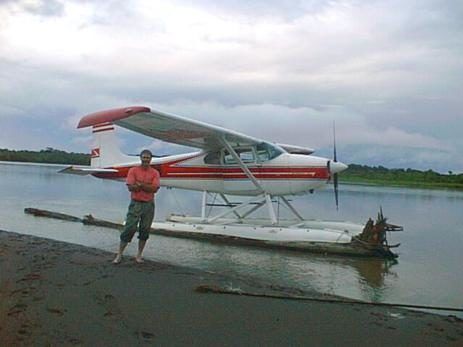
Ten years, six thousand flight hours and two more children later, I was happy with my family…the sum of my life. But still I was very sad to have lost my Amazon River ministry.
THAT WAS TEN YEARS AGO AND MY LIFE HAS CONTINUED TO TAKE UNEXPECTED TURNS. PLEASE STAY TUNED FOR ADDITIONS TO THIS BIO AND I WILL TRY TO GET IT UP TO DATE!
Still Looking for Adventure: Paragliding in the Peruvian Andes! And…traveling the high mountain trails in my motorcycle.
Your friend,
